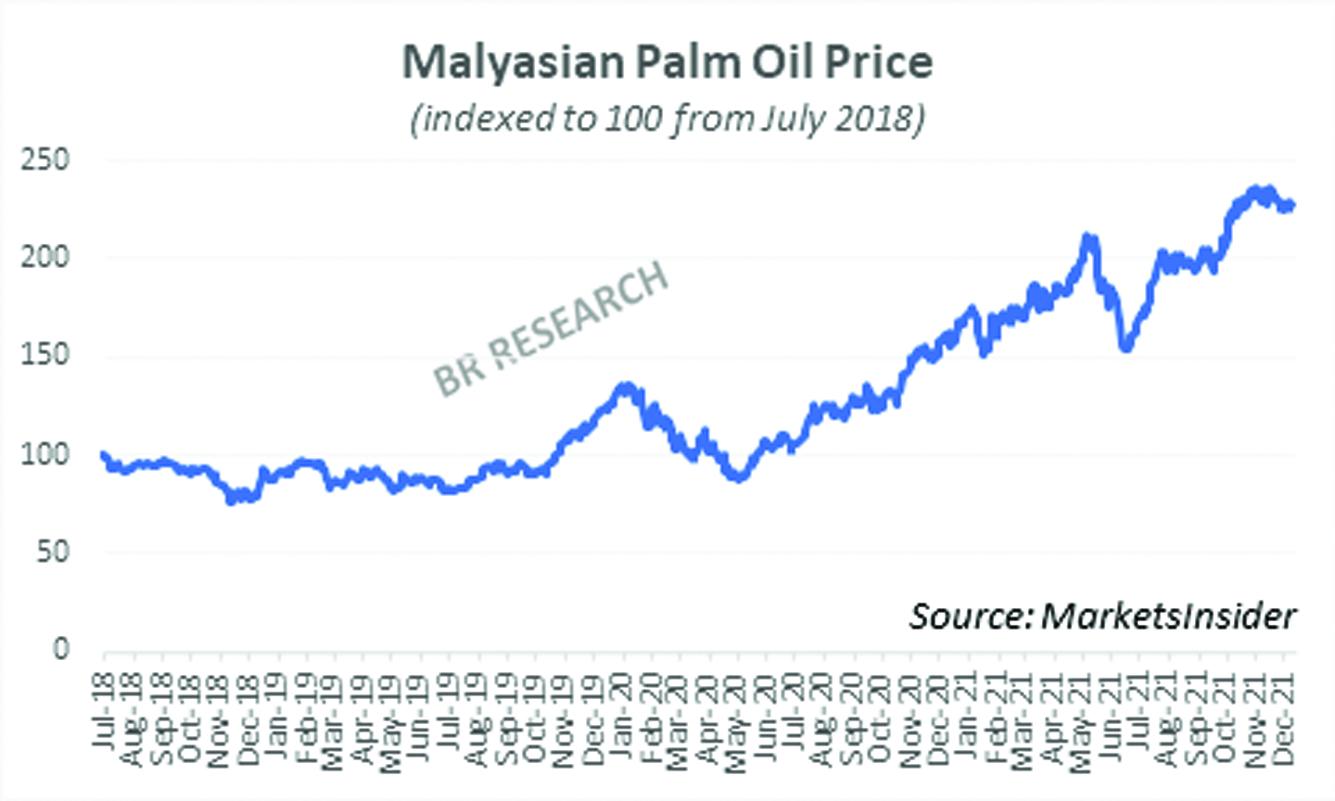More than a third of Pakistan’s food import bill is headlined by palm oil this fiscal year. As early signs of softening emerge in prices of other commodities, particularly energy, hopes were pinned that palm oil will soon follow a similar trajectory. The emergence of Omicron fueled further hope but the production slowdowns being observed among key producing countries, has kept the commodity holding to the highs.

Regional dynamics have ensured that palm oil demand goes unbated despite all-time high prices. Spot prices have come off from record highs but refuse to enter a bear run. More impetus has been provided by India, where demand after having stuttered in September and October, is expected to have rebounded stronger than ever before. India’s imports rose by 12 percent on sequential basis, enough for the palm oil futures to settle around the all-time high rates. Off-take from China has also re-surged after a slowdown in 1QFY22.

Pakistan’s inventory of palm oil, as tracked by the Malaysian Palm Oil Council was lower by a third at the end of November. October’s imports were the lowest in over a year, and it should only be a matter of a month for quantities to return to normalcy. There were earlier signs of Omicron raising huge concerns, but that seem to have now eased. The surge in demand from key Asian buyers has coincided with anticipation of production slowdown in Malaysia and Indonesia.

Import unit price is expected to stay north of $1100 per ton for November and possibly December. Palm oil imports during 4MFY22 are almost entirely driven by price increase, and at this rate, Pakistan could be looking at a palm oil annual import bill around $2.8-3 billion. The United Nations FAO Vegetable Oil Price Index reconfirms the trend, staying at 185 points in November, only marginally lower than the all-time high registered in October. The slight decrease is witnessed in soybean oil, whereas palm oil prices remained virtually unchanged. Palm oil has historically had a strong correlation with global crude oil prices but has so far held firm against the softening in global crude oil price. Supply disruptions are expected to last another month, and if Omicron concerns do not materialize, expect palm oil to continue to hover around the current highs.

























Comments
Comments are closed.